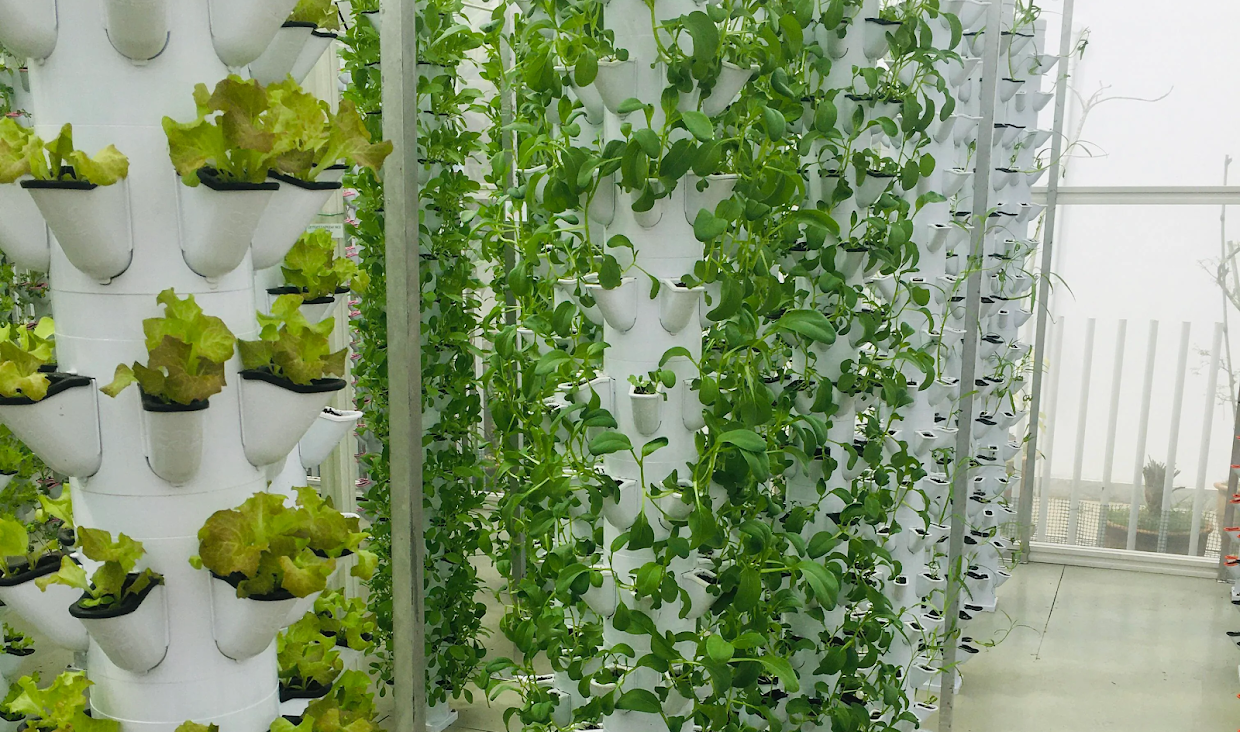Discover the 7 key benefits of tower farms, including space efficiency, water savings, year-round farming, and challenges to consider
As the global population continues to grow, innovative agricultural practices like tower farming are emerging as sustainable solutions for food production. Tower farms, also known as vertical farming systems, utilize vertically stacked layers or cylindrical towers to grow crops efficiently. This method is gaining popularity due to its ability to maximize space, reduce resource consumption, and offer eco-friendly benefits. In this blog, we’ll explore seven key benefits of tower farming and why it’s shaping the future of agriculture.
1. Maximized Space Efficiency
Tower farming allows crops to grow vertically, significantly increasing the number of plants that can be cultivated in a given area. This is especially advantageous in urban environments where land is scarce. A single tower can replace a large expanse of traditional farmland, enabling agriculture in cities and densely populated areas.
2. Reduced Water Usage
One of the standout features of tower farming is its water efficiency. Hydroponic or aeroponic systems used in these setups require up to 90% less water than traditional farming methods. The closed-loop system recycles water, ensuring minimal wastage while still providing optimal hydration for plants.
3. Year-Round Farming
Tower farms are not bound by seasons or weather conditions. With controlled environments, they can produce crops consistently throughout the year. This ensures a steady supply of fresh produce, regardless of external climatic factors, making it an ideal solution for regions with harsh weather conditions.
4. Chemical-Free Produce
Because tower farms are typically set up indoors or in controlled environments, they are less prone to pests and diseases. This reduces the need for chemical pesticides and herbicides, resulting in healthier, chemical-free produce that’s safe for consumers.
5. Reduced Carbon Footprint
By bringing agriculture closer to urban centers, tower farming reduces the need for long-distance transportation of food. Additionally, its efficient resource use and potential reliance on renewable energy sources contribute to a lower carbon footprint compared to traditional farming.
6. Increased Crop Yields
Tower farms optimize growing conditions by controlling light, temperature, and nutrients. This results in faster growth rates and higher yields compared to conventional farming methods. Farmers can grow multiple cycles of crops in the same year, further enhancing productivity.
7. Sustainable and Scalable
Tower farming supports sustainability by minimizing resource use and environmental impact. Its modular design allows for scalability, making it suitable for both small-scale operations and large commercial setups. As the demand for fresh, local produce grows, tower farms can easily adapt to meet these needs.
Drawbacks of Tower Farming: Challenges to Consider
While tower farming offers numerous benefits, it is not without its challenges. Here are some of the main drawbacks associated with this innovative agricultural method:
1. High Initial Costs
Setting up a tower farm requires significant upfront investment in equipment, technology, and infrastructure. Hydroponic or aeroponic systems, LED lighting, climate controls, and monitoring systems can be expensive, making it less accessible for small-scale farmers or hobbyists.
2. Energy Dependency
Tower farms often rely on artificial lighting and climate control, which can lead to high energy consumption. If renewable energy sources are not used, this can offset some of the environmental benefits by increasing carbon emissions.
3. Limited Crop Variety
Not all crops are suitable for tower farming. Leafy greens, herbs, and small fruits like strawberries thrive in vertical systems, but larger crops such as corn, wheat, or root vegetables may not be feasible due to space constraints and structural limitations.
4. Technical Expertise Required
Operating a tower farm requires knowledge of hydroponic or aeroponic systems, nutrient management, and climate control. This level of expertise can be a barrier for new entrants and may require ongoing training or hiring skilled personnel.
5. Risk of System Failures
Since tower farms depend on technology, system failures like pump malfunctions, power outages, or software glitches can disrupt operations and lead to significant crop losses. Backup systems and regular maintenance are essential to mitigate these risks.
6. Limited Aesthetic and Recreational Appeal
Tower farming is highly functional but lacks the natural beauty and recreational aspects of traditional farming. For some people, the absence of open fields, soil, and natural biodiversity may make this method less appealing.
7. Dependence on Specialized Inputs
Tower farming relies on specific inputs like nutrient solutions, grow media, and advanced systems. These inputs can be costly and sometimes difficult to source, depending on the region.
Tower farming is revolutionizing the agricultural landscape by addressing critical challenges like land scarcity, water shortages, and food security. Its innovative design and sustainable practices make it an ideal choice for modern farming. However, while it offers numerous benefits, it is essential to consider its drawbacks before investing in or adopting this technology. Balancing the advantages with challenges—such as high initial costs, energy dependency, and the need for technical expertise—and exploring solutions like renewable energy integration or scaling for broader accessibility can help maximize its potential and ensure a sustainable future for agriculture.


.png)










0 Comments